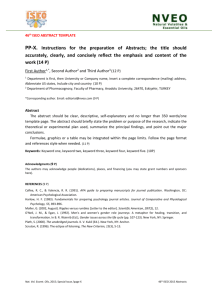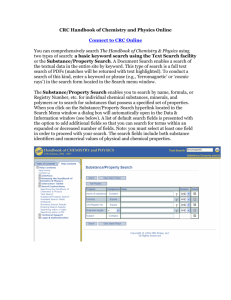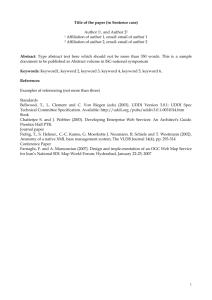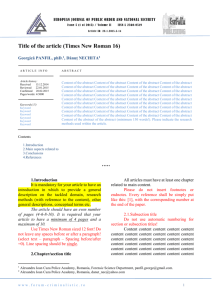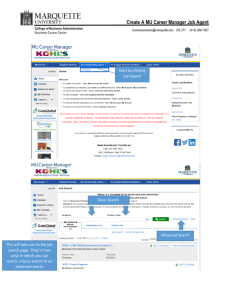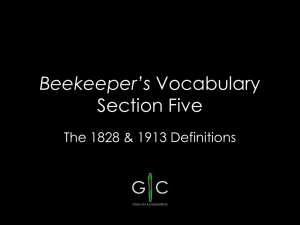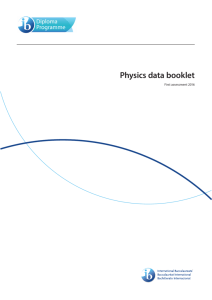Double-Entry Note Variation
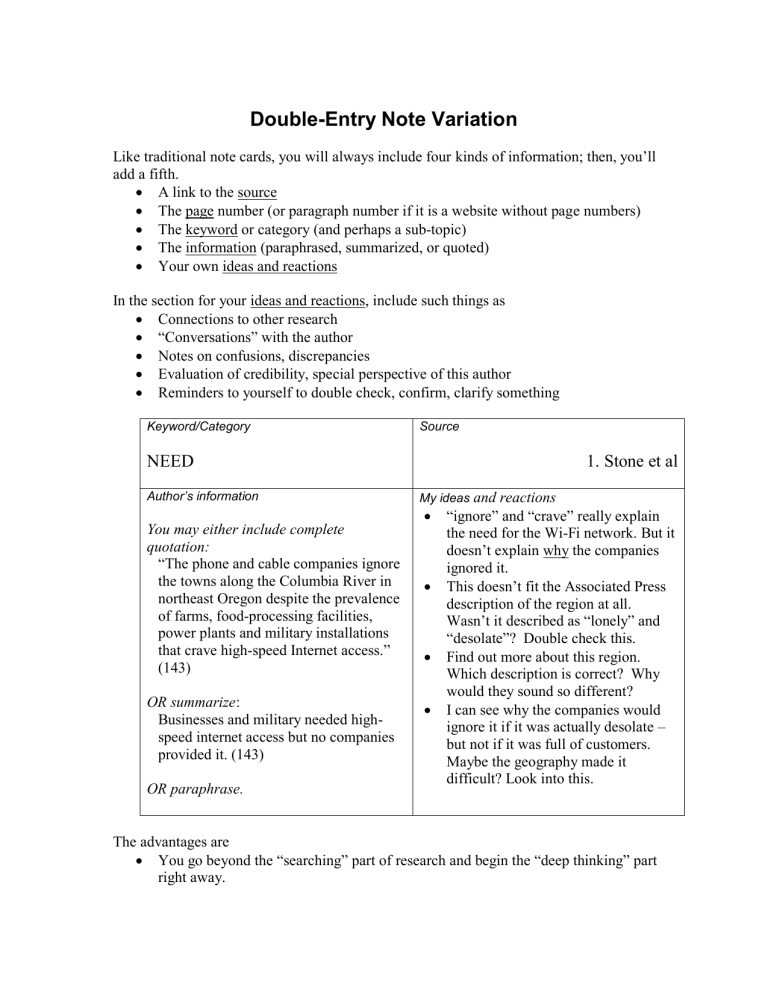
Double-Entry Note Variation
Like traditional note cards, you will always include four kinds of information; then, you’ll add a fifth.
A link to the source
The page number (or paragraph number if it is a website without page numbers)
The keyword or category (and perhaps a sub-topic)
The information (paraphrased, summarized, or quoted)
Your own ideas and reactions
In the section for your ideas and reactions, include such things as
Connections to other research
“Conversations” with the author
Notes on confusions, discrepancies
Evaluation of credibility, special perspective of this author
Reminders to yourself to double check, confirm, clarify something
Keyword/Category
NEED
Author’s information
You may either include complete quotation:
“The phone and cable companies ignore the towns along the Columbia River in northeast Oregon despite the prevalence of farms, food-processing facilities, power plants and military installations that crave high-speed Internet access.”
(143)
OR summarize :
Businesses and military needed highspeed internet access but no companies provided it. (143)
OR paraphrase.
Source
My ideas and reactions
“ignore” and “crave” really explain the need for the Wi-Fi network. But it doesn’t explain why the companies ignored it.
This doesn’t fit the Associated Press description of the region at all.
Wasn’t it described as “lonely” and
“desolate”? Double check this.
Find out more about this region.
Which description is correct? Why would they sound so different?
I can see why the companies would ignore it if it was actually desolate – but not if it was full of customers.
Maybe the geography made it difficult? Look into this.
1. Stone et al
The advantages are
You go beyond the “searching” part of research and begin the “deep thinking” part right away.
You capture what you were thinking at the time you read the article.
(Why did I write this down? Why did I think it was important? How did I intend to use it?)
You can include reminders to yourself for further research or interpretation.
Here, for instance, I have followed up on one of the questions generated in the previous note. I have included the question as a sub-topic because I will probably have some more notes about this.
Keyword/Category
NEED
(Was the area “desolate” or not?)
Author’s information
“14,000 residents of rural Hermiston in eastern Oregon” (84-85)
“its 200 would-be rescue workers” (84-85)
Source
2. Yang
My ideas and reactions
Is this the population of the town of
Hermiston or of the area of the wireless network?
Is 200 rescue workers a lot for a small town? Or is this for the whole area?
keep looking for more info
Form: These can be recorded on electronic documents (by first making and saving a template), large note cards (5 x 8 inch), notebook paper, or a combination. The note may be divided horizontally or vertically. (In other words, you can write your comments beside the notes or below the notes.)
Quote or Paraphrase? Most authors suggest careful paraphrasing or summarizing as the first step. However, some others suggest using the “copy and paste” function to copy the exact quotations rather than paraphrasing, then paraphrasing later as you begin your outline or first draft. That way, you can check back to make sure that your final draft does not include inadvertent plagiarism of sentence structure or phrasing. This is probably only feasible if you are working on a computer.
Example of a template made by creating a 2x2 table on a word processing program.
Keyword/Category Source
Author’s information
My ideas and reactions


